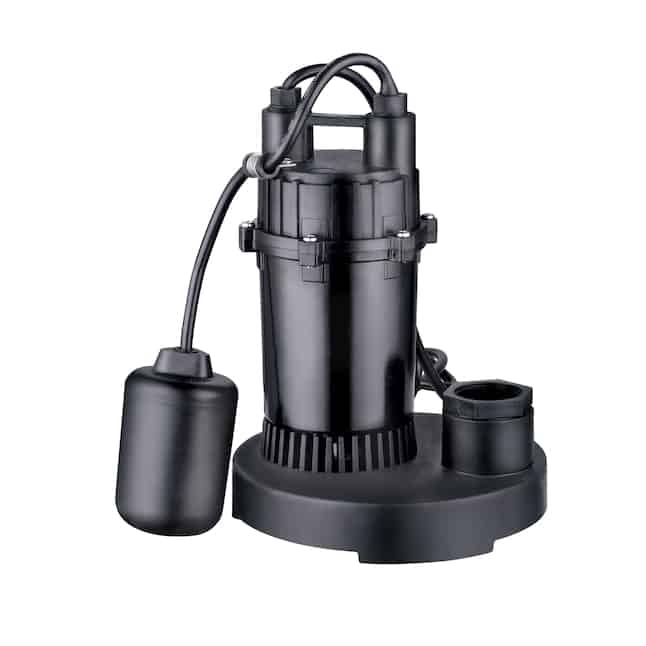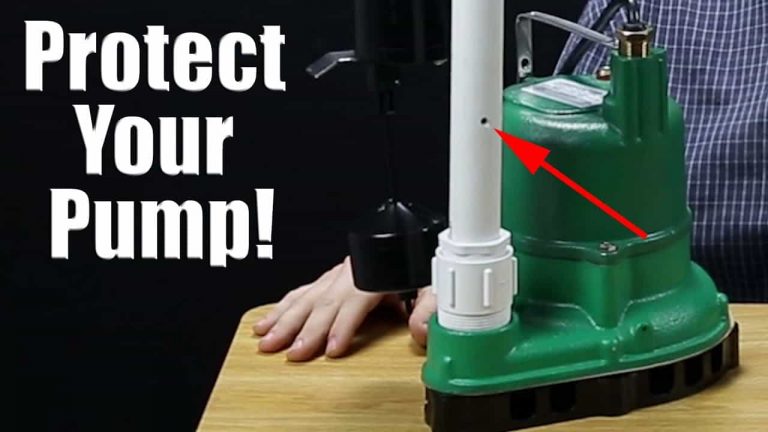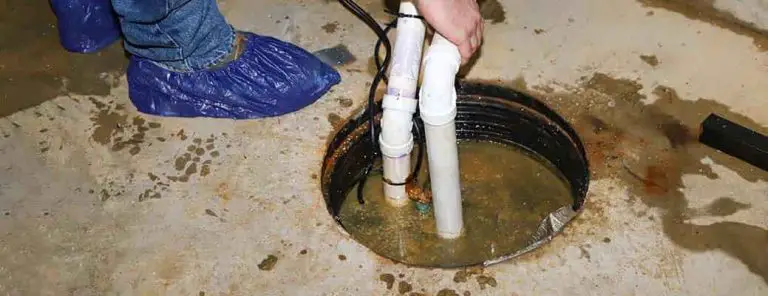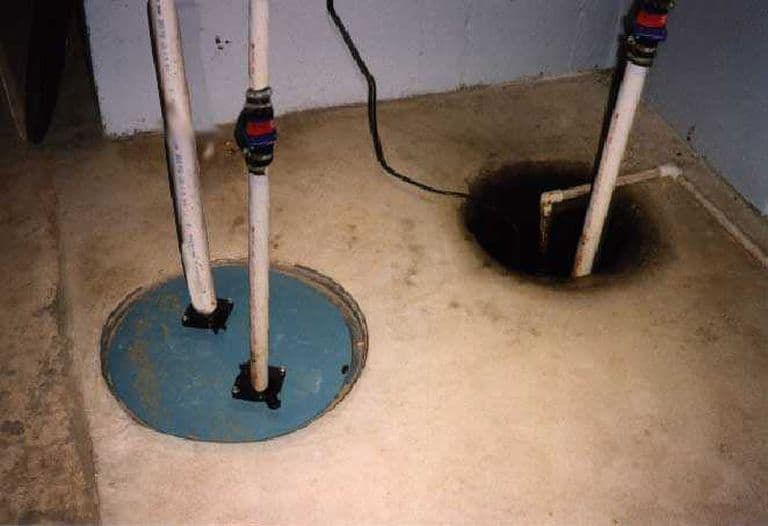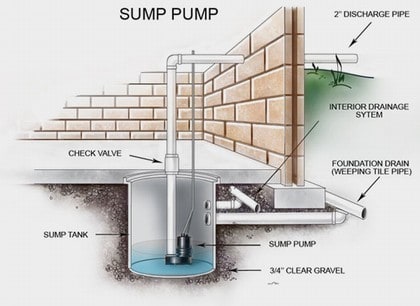How Does a Sump Pump Work – The Basics You Should Know
Are you worried about water damage in your home? A sump pump can help protect your home from water damage by removing water that has accumulated in a basin. It activates either through a float switch or pressure sensor, pumps the water out of the basin, through a discharge pipe, and away from the house. It continues to operate until the water level in the basin drops to a safe level.
In this article, we will take a closer look at how sump pumps work, the different types available and how to properly maintain them to ensure they are working efficiently. With this knowledge, you’ll be able to keep your home safe from water damage. So, don’t wait, keep reading to learn more about sump pumps and how to protect your home.
What is a sump pump?
A sump pump is a device that is installed in the lowest area of a home, usually within the basement or crawlspace. Its purpose is to remove any excess water that has accumulated in this area and pump it out so it won’t cause basement flooding or other forms of water damage.
It works by using a float switch which triggers when there’s been an unusually high amount of water build-up in the sump pit. Once this happens, it will activate the motor and start pumping water out into a discharge pipe which carries it away from your home.
Sump pumps are invaluable tools for keeping your home dry during times of heavy rainfall and other instances where too much water collects in one location.
So, how sump pump works?
Sump pumps generally work by taking away excess water from a sump basin. The sump basin is usually located at the lowest point of a basement or crawl space. It utilizes a float switch, which activates the pump once the water level inside the sump has reached a particular threshold.
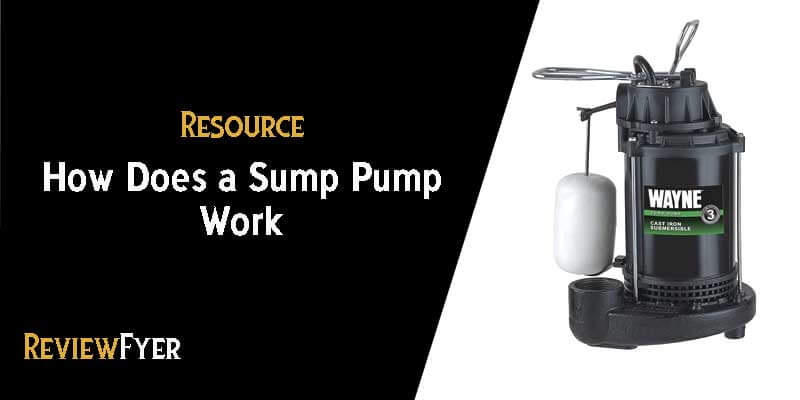
The sump pump itself consists of several integral components, including an impeller, motor, and discharge pipe. The impeller moves the water while the motor provides enough power to do so. Meanwhile, the discharge pipe directs the pumped out liquid away from home property.
For it to work properly, sump pumps need an energy source like a backup power source like a battery or generator or an electrical outlet. So even if there is no power, flooding will not happen. Finally, these pumps are designed to work automatically; once water levels reach set limits, the float switch triggers them and the water is immediately removed from your basement floor or crawl space to protect against mold and structural damage.
Types of sump pumps
When it comes to preventing your home from water damage, it’s important to know the different types of sump pumps available. There are several types that differ in features and benefits and can be used to protect your home against water damage. Below are the most common types of sump pumps:
Submersible Pump
Submersible pump is a reliable and efficient way to manage water infiltration in your home or from your basement floor. They are fully submerged in the sump pit, which makes them quieter than other types of sump pumps as the motor is sealed in an oil-filled chamber. This also means that the motor is cooled by the surrounding water, allowing it to operate more efficiently.
A float switch or pressure sensor is usually present in the sump basin, triggering the submersible pump when the water builds up there. The recently collected water is then discharged away from your house via a pipe to either a dry well or farther away from your home foundation. The process continues until such time that enough water has been pushed out and cleared for a safe level.
Submersible pumps tend to be more powerful than pedestal pumps, since they are able to release more gallons of water every hour. For this reason, submersible pump is the best utilized on homes with heavily accumulated liquid or basements with finished walls and furniture installations.
Pedestal Pump
Pedestal pump is a beneficial system for homes that need a reliable solution for light water infiltration or unfinished basements. This type of pump is mounted above the sump basin and works by using float switches or pressure sensors to activate when water accumulates in the basin.
The pedestal pumps then pump water out of doors through an outlet pipe, away from the house and into a dry well, if necessary. As soon as the water level recedes back to normal, the pump turns off and waits to reactivate again as needed. It’s worth noting that the pedestal sump pumps require electricity, usually from an outlet, in order to operate correctly. Additionally, these systems are easier to repair compared to submersible pumps because access is better with them being located on top of the basin.
Battery Backup Sump Pump
Battery backup sump pump is a great way to provide an extra layer of protection for your home. They are installed as secondary pumps in case the primary pumps fail or there is a power outage. Battery backup sump pumps pump run on a battery, so it’s always ready to go no matter what!
When activated, the battery powered backup sump pumps will be able to pump water out of the basin and away from your house. It will keep running until the water level drops to a safe level, at which point it will turn off until it needs to activate again. To make sure that everything stays up and running optimally, you need to ensure that you stay on top of regular maintenance for the battery- this can be done by connecting it to an AC outlet or utilizing solar panels.
Water Powered Backup Sump Pump
Water powered pumps are a great addition to any home that has a municipal water supply. It does not rely on electricity like most sump pumps do, but it uses the pressure of the incoming water from the main water supply line to power itself. Water powered sump pumps will automatically activate when the primary sump pumps fails or in instances where there is a power outage.
Once activated, the water powered sump pumps will take over and start pumping water out of your sump basin through a discharge pipe safely away from your house. The pump will shut off once it senses that the basin’s water level has dropped to an acceptable level. It’s important to make sure that there is consistent and stable incoming pressure for this type of sump pump because it may be affected by sudden changes in pressure. For those homes located in areas with low or no municipal water supply, this type of system should not be used as an alternative solution.
Combination sump pump
The combination sump pump is a type of sump pump that provides an extra layer of protection. It consists of both a primary and a secondary pump – the primary typically being a powerful submersible pump and the secondary usually being either water-powered or battery-powered.
When water reaches a certain level in the sump basin, the primary pump is activated, pumping out most of the water until it’s gone down to a safe level. Then, when either the primary pump fails or there is a power outage, the secondary pump takes action and starts to operate. The secondary pump will continue to run until it’s reduced the water level in the basin to its safe limit before it shuts off again.
This dual system ensures maximum safety as if your primary pump were ever to fail, you can trust that your second back up pump will initiate operation and start protecting your home.
Choosing a sump pump
When it comes to installing a sump pump, choosing the right one is key. You’ll want to take a look at factors such flow rate, size of the basin, and noise level. It’s also important to think about what type of pump you need and what material it should be built with. Energy efficiency must also be taken into consideration when choosing the right sump pump for your needs.
It can also be helpful to consider features like an automatic shut off, backup power options, water level alarms and remote monitoring before making your purchase. This way you can make sure that your sump pump is able to provide the necessary protection needed to keep your structure safe in case of flooding.
Flow Rate
Flow rate is the most important factor when you are about to select a sump pump. This refers to the amount of water the pump can move in a certain period of time, so a higher flow rate means more water is moved faster. It’s important to get a sump pump that has the right flow rate based on your sump basin size and how much water needs to be removed.
Otherwise, you risk overloading or not pumping out enough water fast enough. Good rule of thumb is that bigger pumps need more flow rate because more water needs to be pumped out faster so examine the specs of each when purchasing. Of course, you also need to factor in budget and make sure it’s within what you’re willing to pay for reliability and functionality with your home setup – that’s why it may help to research brands/pumps before purchase.
Size of Sump Basin
When selecting a sump pump, it’s important to consider the size of the sump basin. This is mainly because the volume of water that needs to be pumped out will determine the type of pump and its flow rate.
A basin with a higher capacity calls for a pump with a larger flow rate, while one with low capacity may need a lower flow rate. Also, make sure that the size of your pump can fit snugly into the sump basin as some might be too big or too small.
Noise level
When it comes to choosing a sump pump, noise level should be one of your top considerations. Nobody wants a pump that is disruptively loud, especially if it’s in a living area or workspace. That’s why it’s important to look for pumps with low noise levels and those that come with additional features designed to help reduce sound such as soundproofing or vibration dampening technology.
You’ll also want to check the decibels (dBs) of all potential sump pumps before buying it; the lower the rating, the quieter the pump will be when working. Quieter pumps may cost more initially but they could save on energy costs in the long run since they don’t require constant repairs due to excessive noise levels and avoid potential legal issues. Not all pumps are created equal, so be sure to choose one that works best for your individual situation!
Type of sump pump
Choosing the right type of sump pump is an important factor when it comes to protecting your home from a flooded basement. There are a few different types available, submersible pump, pedestal pump, backup pump like battery backup pump and water-powered backup pump to combination sump pump systems. All provide varying features and benefits for particular applications and should be taken into consideration when deciding on the best option for your home.
How to Maintain a Sump Pump
To ensure that your sump pump works efficiently and effectively, it’s important to maintain it properly. Don’t rely blindly on an old sump pump, plan for regular maintenance checks to detect minor issues before they become major problems.
Don’t wait for the pump to fail, replace it when signs of wear and tear start to show. Regular cleaning of the pump, basin and tank is crucial to remove debris and keep the system functioning correctly. Proper maintenance will keep your sump pump ready to handle water emergencies and will give you peace of mind.
Don’t rely on your old sump pump blindly
When it comes to sump pump maintenance, you should never rely on an old system blindly. Sump pumps have a lifespan, and as time passes, they can become less reliable and more prone to failure.
Regular maintenance checks should be done in order to detect any issues before they become problematic. By keeping an eye out on both the performance and age of your sump pump, you can ensure that it’s always working at its best.
Plan for regular maintenance checks
Regular inspections of your sump pump are essential to safeguard against potential issues before they become too troublesome. This involves not only assessing the water level inside the sump basin and the check valve, but also the discharge pipe and float switch.
It is also a good idea to test the pump thoroughly by running some water into its basin to see if it is working properly. By scheduling regular inspections, you can guarantee that your sump pump is functioning optimally as well as precluding any water damage in the long run.
Replace It Before It’s Too Late
Maintaining a sump pump is of utmost importance if you want to avoid costly repairs and water damage. As soon as you notice signs of wear and tear, such as increased noise levels, sluggish pumping or leakage, it’s time to replace the pump before it’s too late. Making regular maintenance checks can help find any problems before they happen and give you time to replace the pump before it breaks down.
By replacing a broken sump pump before it shuts down suddenly, you can rest assured that your sump will always be in top working condition and ready for an emergency. Don’t wait until it’s too late – regular maintenance checks are key to keeping your sump in good shape so that you won’t run into unexpected costly repairs or water damage!
Regular cleaning of the pump, basin and tank is crucial for efficient operation
Maintaining a sump pump is absolutely essential for its efficient operation. This requires regularly cleaning the pump, basin and tank to prevent debris from clogging the system which can reduce performance.
When it comes to keeping your sump pump in shape, removing any leaves or dirt build up is the first step. Then, giving the entire system a good clean once every few months is essential to ensure that everything runs smoothly. This includes scrubbing off any visible sediment or residue on the inside of the basin as well as using a detergent on all surfaces as necessary.
By regularly cleaning your sump pump and its components, you can greatly extend its useful life and help ensure that it’s always ready for emergencies. Plus, it will give you peace of mind knowing that your sump pump is running optimally!
Sump Pump Troubleshooting – Most Common Issues to Check
Sump pump troubleshooting involves checking the power supply, ensuring there are no blockages, verifying float movement, checking proper switch operation, inspecting the discharge pipe, looking for leaks, and inspecting the check valve. If any issues are found in these areas, they should be addressed in order to ensure the sump pump is working properly.
Check power supply
Troubleshooting a sump pump can be tricky, especially when it comes to the electrical aspect. First and foremost, make sure that the pump is plugged in and its power supply circuit breaker is not tripped. If there is no power, it could mean the ground fault circuit interrupter (GFCI) or fuse has malfunctioned; if there is power but the pump still isn’t working then it could be indicative of a defective pump requiring replacement.
Check for blockages
One of the most crucial steps in troubleshooting your pump is to check for blockages. This includes both visually inspecting your sump pump as well as its discharge pipe to make sure that there is no debris, gravel or other materials that may be preventing it from working properly.
If you spot any blockages, you should take the time to clean and remove them. Doing so can restore proper functioning of your pump – saving you time, money and a whole lot of headache in the long run. On the other hand, if the blockage still persists despite your best efforts, then it might be time to consider replacing your pump altogether.
Check for Float switch operation
When troubleshooting a sump pump, checking for correct float switch operation should always be at the top of your list of priorities. This involves examining if the device turns on and off correctly and whether the pump is running continuously for the stuck float switch. If it does not, most likely you will need to replace it – after ensuring proper replacement selection according to your particular setup specifications.
Check for leaks
If you want to be sure that your sump pump is working properly, then you need to do some troubleshooting. One of the key things to check for is any leaks. These tell-tale signs are indicators of a worn or damaged pump, and if they go untreated, they can cause more damage down the line. Specifically, water can seep into the surrounding area like basement floor or even inside your home and damage it even further, or impair the effectiveness of the sump pump altogether.
So it’s important to inspect your home’s sump pump thoroughly for any leaks and take care of them right away through repairs or replacement. By doing so, you’re taking proactive steps to make sure your property stays safe from unexpected flooding!
Inspect the check valve
Troubleshooting a sump pump system is important to make sure it is running properly. In this process, it’s important to inspect the check valve. The check valve is a very critical part of the pump system as its main purpose it to avoid the backflow of water into the sump pit after the pump turns off.
Therefore, inspecting the check valve should be done to make sure that it works correctly and can prevent water from flowing back into the sump pit and causing damage that leads to flooding. Failure to check this valve may result in costly water damage and can also affect how your sump pump works. So remember: regularly inspect your sump pump’s check valve!
Final Words
In conclusion, sump pumps are essential devices used to prevent flooding and water damage inside and outside your home. By understanding how a sump pump works and exercising proper maintenance, you can trust it will do its job properly during heavy rains. Your sump pump needs to work properly to protect your house, so make sure you know how it works and check it regularly to ensure smooth operation.

